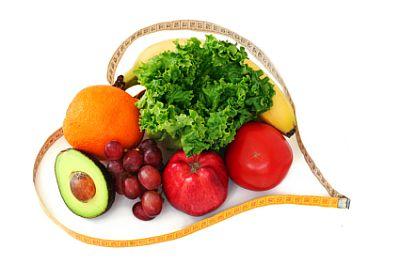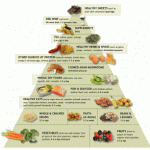A 1500 calorie diabetic diet means eating no more than 1500 calories of food each day. You may need this diet to control your blood sugar or lose weight. Or lower your risk for heart problems.
- Blood sugar is the amount of glucose (simple sugar) in your blood. Glucose is the main source of energy for your body. Glucose comes from carbohydrates in your diet.
- A diabetic diet limits how much carbohydrate, fat, and protein you eat. A 1500 calorie diet is low in calories and fat.
Many individuals with Type 2 diabetes will find that they must battle not only their blood sugar, but also their weight, as well, as these two conditions feed into one another.
Here are a few things you should know about following a 1500 calorie diabetic diet.
- You should be under the supervision of a doctor or a registered dietician. Diabetes is a serious illness. When trying to maintain a low-calorie diet, it’s important that you consult with a medical or nutrition professional to ensure you are meeting your unique needs.
- It may be necessary to take vitamin supplements or to get regular vitamin shots from your doctor’s office. This is something you can discuss with your physician.
- Eat smaller meals more often. Many diabetics are instructed to break up their day into smaller snack-size meals eaten about two or three hours apart. This can help to keep blood sugar stable all day long and prevent the dangerous drops and spikes associated with this disease.
- Consume the right combination of foods. A nutritionist or doctor can provide you with suggested meals, portion sizes, and the correct combinations of protein, fats and carbohydrates you should be consuming. This can help take the guesswork out of the process.
It is usually rich in vegetables and fruit and should comply with the following requirements:
- it should be diverse;
- it should be rich in vitamins (from fruit and vegetables);
- it should be rich in calcium, potassium, and magnesium;
- it should be rich in protein (from poultry and fish);
- it should contain reduced sodium intake;
- it should be low in saturated fat, trans fats, and cholesterol;
- it should contain diary.
Care:
- Ask your caregiver for the diabetic exchange diet CareNote to learn more about serving sizes. Your caregiver will tell you when to eat meals and snacks to control your diabetes. Talk with your caregiver if your blood sugar levels are too low or too high.
- A sample of a 1500 calorie diet is listed below. You can exchange or trade one food for another from the same food group. For example, you can choose 1 slice of bread instead of 3/4 cup of another dry cereal. Or you can choose 1/2 cup fruit juice instead of 1-1/4 cups of melon.
Serving Sizes: Use the list below to measure foods and serving sizes. A serving size means the size of food after it is cooked or prepared.
- 1 pint or 2 cups (16 fluid ounces) of liquid is the size of 1-1/3 soda-pop cans.
- 1-1/2 cup (12 fluid ounces) of liquid is the size of a soda-pop can.
- 1 cup of food is the size of a large handful, or 8 fluid ounces of liquid.
- 1/2 cup of food is about half of a large handful, or 4 fluid ounces of liquid.
- 2 tablespoons (Tbsp) is about the size of a large walnut.
- 1 tablespoon (Tbsp) is about the size of the tip of your thumb (from the last crease).
- 1 teaspoon (tsp) is about the size of the tip of your little finger (from the last crease).
- 3 ounces of cooked meat, fish, or poultry is about the size of a deck of cards.
- 1 ounce of cooked meat, fish, or poultry is about 1/4 cup (c).
- One ounce of hard cheese is about a 1 inch cube.
- A serving of vegetables is 1/2 cup (1/2 handful) cooked, or 1 cup (1 handful) raw.
SAMPLE 1500 CALORIE MENU
Breakfast
- 2 breads or starches, such as 3/4 cup (1 ounce) corn flakes and 1 slice toast
- 1 fruit, such as 1 small (5 inch) banana or 1/2 of a 9 inch banana
- 1 milk, such as 1 cup skim or 1 cup 1% milk
- 1 meat or protein, such as 1/4 cup cottage cheese or 1 poached egg
- 1 fat, such as 1 tsp margarine
Lunch
- 2 ounces meat or protein, such as 2 ounces sliced turkey breast
- 2 breads or starches, such as 2 slices bread
- 1 vegetable, such as 1 lettuce leaf and 2 tomato slices
- 1 fat, such as 1 tsp regular mayonnaise or 2 tsp lowfat mayonnaise
- 1 fruit, such as 1 medium (3 inch) apple
Afternoon Snack
- 1 starch, such as 3 cups air-popped popcorn
Dinner
- 2 ounces meat or protein, such as 2 ounces lean roast beef
- 2 starches, such as one 3 inch baked potato and 1 medium (2-1/2 inch) dinner roll
- 1 fat, such as 1 tsp margarine
- 2 vegetables, such as 1 cup (8 ounces) cooked mixed vegetables
- 1 fruit, such as 1-1/4 cups fresh strawberries
Evening Snack
- 1 bread, such as three 2-1/2 inch squares graham crackers
- 1 milk, such as 1 cup (8 ounces) skim or 1 cup 1% milk
CALL YOUR CAREGIVER IF:
- You have questions about the serving sizes in this diabetic diet.
- You have questions about how to prepare or cook foods on this list.
- You have questions about how or where to buy foods on this list.
- You have questions or concerns about this food list, your illness, or medicine.
Care Agreement
You have the right to help plan your care. To help with this plan, you must learn about your diet. You can then discuss your treatment options with your caregiver. You can work with them to decide what care will be used to treat you. You always have the right to refuse treatment.



